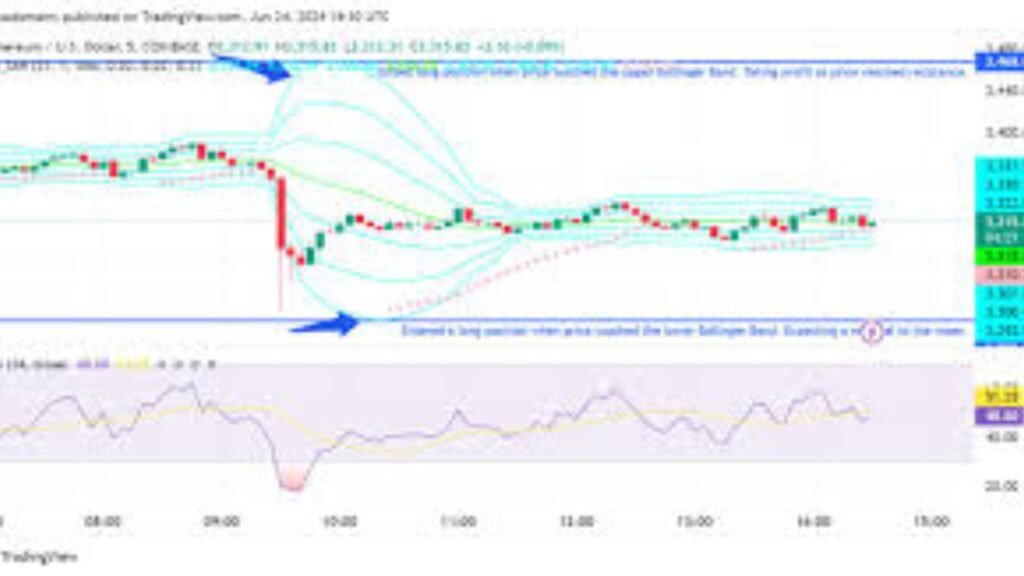
Best Practices for Cryptocurrency Trading:Cryptocurrency trading can be an exciting and lucrative way to invest. However, it also comes with its own set of challenges. To navigate the turbulent waters of the crypto market effectively, it’s crucial to adopt best practices that can help mitigate risks and improve your chances of success. This article covers essential strategies, tips, and insights into the best practices for cryptocurrency trading.
Understanding Cryptocurrency Trading
Before diving into the best practices, it’s essential to understand what cryptocurrency trading entails. Cryptocurrency trading involves buying and selling digital assets in various forms, with the aim of capturing price fluctuations. Unlike traditional stock trading, cryptocurrency markets operate 24/7, allowing traders to buy or sell at any time.
Types of Cryptocurrency Trading
- Day Trading: This is where traders open and close their positions within the same day, aiming to profit from short-term price movements.
- Swing Trading: Swing traders hold their positions for several days or weeks to benefit from expected upward or downward market shifts.
- Scalping: This strategy involves making multiple trades within a short time frame, seeking small profits on tiny price changes.
Setting Clear Goals
One of the first steps in cryptocurrency trading is setting clear, achievable goals. Whether you’re looking to make a quick profit or investing for the long term, defining your objectives will influence your trading strategy.
Define Your Risk Tolerance
Understanding your risk tolerance is critical. How much are you willing to lose on a trade? Establishing this number can guide your investment decisions and help you avoid emotional reactions during market fluctuations.
Determine Your Investment Horizon
Are you in it for the short term or the long haul? Your investment horizon should influence how you trade. Long-term investors might opt for a “buy and hold” strategy, while short-term traders may frequently adjust their positions based on market trends.
Research and Analysis
Conducting thorough research is a cornerstone of successful cryptocurrency trading. The market is driven by numerous factors, including technology, market sentiment, and regulations. Here are some key research strategies:
Fundamental Analysis
Fundamental analysis involves evaluating a cryptocurrency’s underlying technology, market potential, and team behind the project. Look for key factors such as:
- Use Case: What problem does the cryptocurrency aim to solve?
- Technology: How robust is the underlying technology? Is the platform scalable?
- Community Support: A strong community can indicate the potential longevity of a cryptocurrency.
Technical Analysis
Technical analysis focuses on historical price movements and trading volume to predict future price trends. Traders often use charts and various indicators to make informed decisions. Some popular indicators include:
- Moving Averages: These help smooth out price action by filtering out “noise.”
- Relative Strength Index (RSI): This indicator measures the speed and change of price movements, indicating overbought or oversold conditions.
- Candlestick Patterns: Understanding common candlestick patterns can give insights into market sentiment.
Choose the Right Trading Platform
Selecting a trustworthy and user-friendly trading platform is essential for anyone looking to trade cryptocurrencies. When considering a platform, keep the following factors in mind:
Security Features
Look for platforms that prioritize security through measures such as two-factor authentication (2FA) and cold storage options for assets.
User Experience
A platform should be intuitive and easy to navigate. Complicated interfaces can lead to costly mistakes, especially for beginners.
Trading Fees
Different platforms have different fee structures. Compare these fees to understand how they will affect your profits.
Developing a Trading Strategy
Having a solid trading strategy is key to long-term success. A well-defined strategy helps reduce emotional trading and keeps you disciplined. Here are some popular strategies:
Dollar-Cost Averaging
This technique involves investing a fixed amount of money at regular intervals regardless of the price. This helps to mitigate the impact of volatility and can lead to purchasing assets at different price points.
Diversification
Don’t put all your eggs in one basket. Diversifying your portfolio can help reduce risk. Consider investing in multiple cryptocurrencies rather than focusing solely on one.
Setting Stop-Loss and Take-Profit Orders
Stop-loss orders automatically sell your assets at a predetermined price to limit losses, while take-profit orders lock in profits when prices reach a certain level.
Keep Emotions in Check
Emotional trading can lead to poor decision-making. It’s vital to remain calm, especially during periods of high volatility. Here are some tips for maintaining emotional control:
Stick to Your Plan
Once you’ve developed a trading plan, commit to it. Avoid making impulsive decisions based on market hype or fear.
Practice Mindfulness
Engaging in mindfulness exercises can help you stay focused and calm during trading. Consider meditation or deep-breathing techniques to create a sense of calm before executing trades.
Stay Informed
The cryptocurrency market evolves rapidly, so staying informed is essential. Follow reputable news sources, join online communities, and participate in forums to keep your finger on the pulse of the market. Here are some ways to stay updated:
Subscribe to Newsletters
Many platforms offer newsletters that provide market analysis, trends, and news. Subscribing to these can give you insights and help you make informed decisions.
Engage with Other Traders
Consider joining a trading community or forum like Reddit, where you can share experiences, strategies, and learn from others in the field.
Risk Management
Effective risk management is crucial for safeguarding your investment. Here are some strategies to consider:
Never Invest More Than You Can Afford to Lose
It’s important to only invest money that you can afford to lose. Avoid making trades that could jeopardize your financial stability.
Regularly Review Your Portfolio
Periodically assess your portfolio’s performance and make necessary adjustments based on your overall strategy and market conditions.
Conclusion: Cultivating a Successful Mindset
Cryptocurrency trading can be a rewarding journey when approached with care and diligence. By adopting the best practices outlined in this article, you can optimize your trading efforts and make well-informed decisions. Remember to be patient and persistent; success in trading often requires time, effort, and continuous learning.
Whether you are just starting or looking to refine your trading strategies, keeping these best practices in mind will help set the foundation for a successful trading experience in the vibrant world of cryptocurrency. Always remain adaptable, as the landscape is constantly changing, and the ability to pivot in your approach will serve you well as you navigate this fascinating market. Happy trading!






